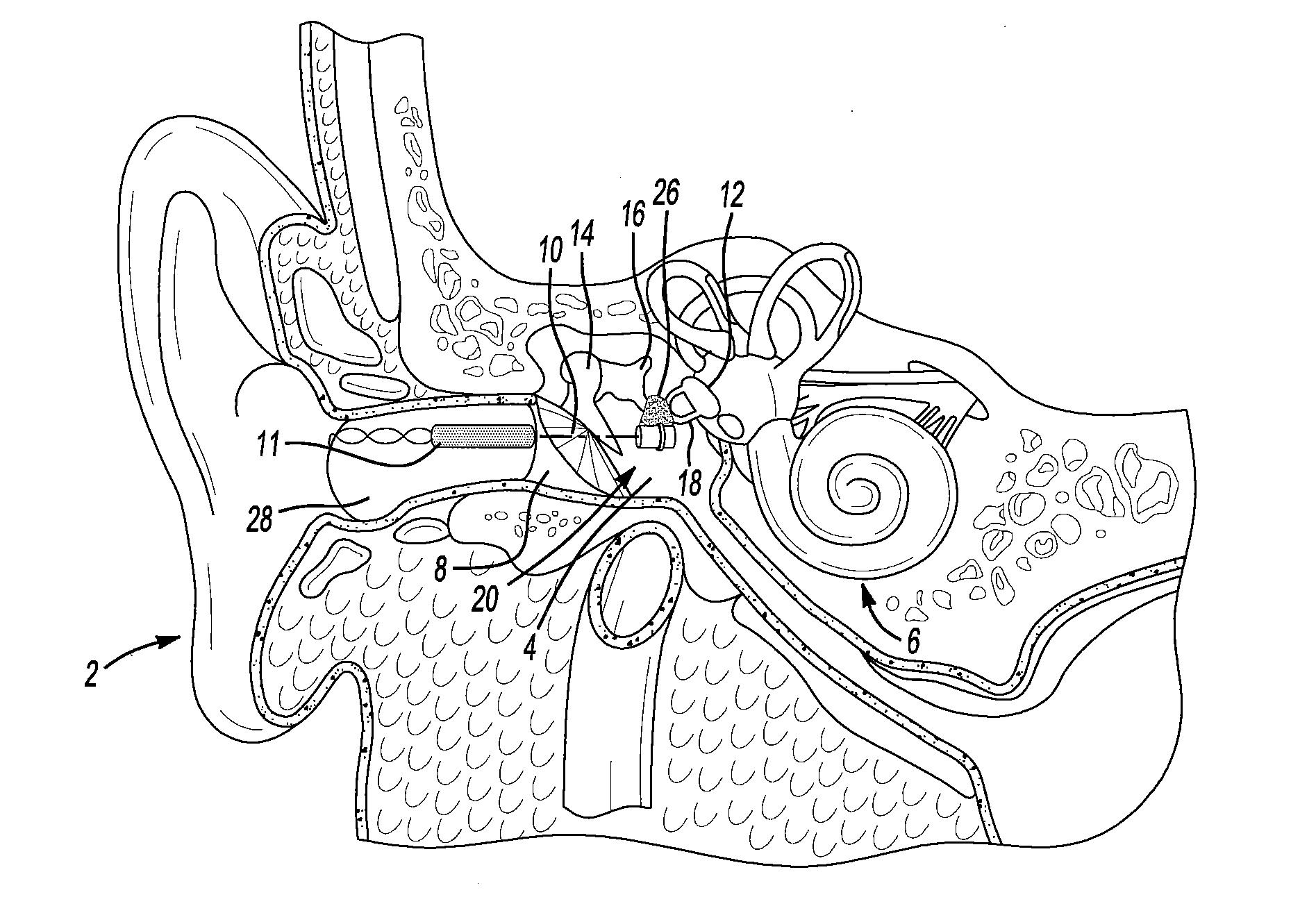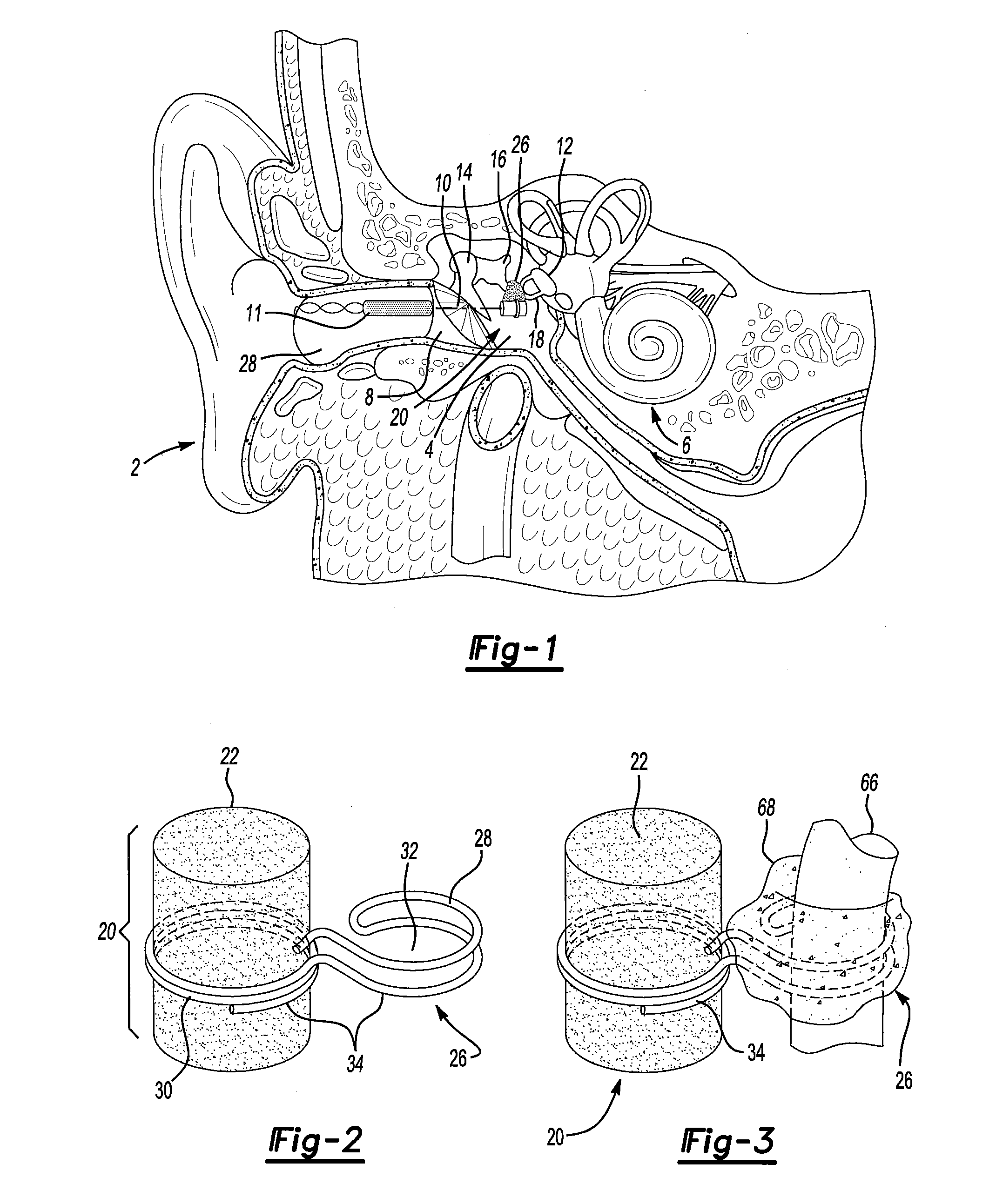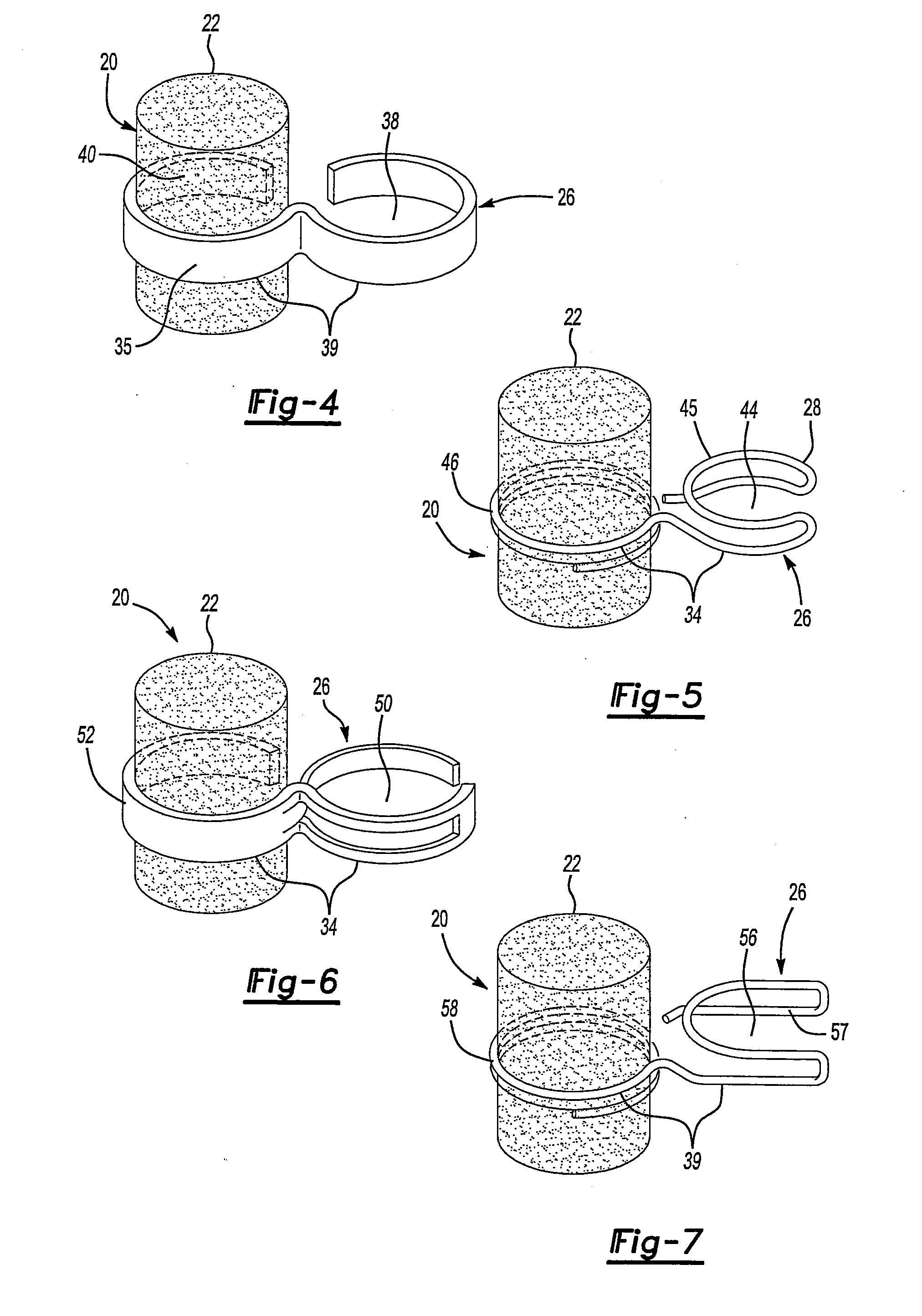Middle ear implant and method
a technology of middle ear and implant, which is applied in the field of middle ear implants, can solve the problems of insufficient stimulation of cochlea and/or auditory nerve, inability to transmit sound into the outer ear canal, and inability to align the magnetic field with the magnetic field, so as to reduce the number or types of tools required, and the effect of shortening the procedure duration
- Summary
- Abstract
- Description
- Claims
- Application Information
AI Technical Summary
Benefits of technology
Problems solved by technology
Method used
Image
Examples
Embodiment Construction
[0048]A human ear is represented in FIG. 1. It includes an outer ear 2, a middle ear 4, and an inner ear 6. Pertinent to the description of the present invention is an outer ear canal 8 which is normally closed at its inner end by tympanic membrane, or eardrum, 10. Also pertinent is an ossicular chain, which, if intact, extends from tympanic membrane 10 to oval window 12 defining an entrance to the inner ear 6. The intact ossicular chain extends through the middle ear 4 and includes a malleus 14, an incus 16, and a stapes 18. A properly functioning ossicular chain transmits vibrations from the tympanic membrane 10 in series through the malleus 14, the incus 16 and the stapes 18 to the oval window 12. Vibrations at the oval window stimulate the inner ear 6, whereby the person perceives the sound received in the outer ear 2.
[0049]An object of the present invention is to provide the vibratory stimulation to the inner ear 6 when there otherwise is inadequate vibration transmission in th...
PUM
 Login to View More
Login to View More Abstract
Description
Claims
Application Information
 Login to View More
Login to View More - R&D
- Intellectual Property
- Life Sciences
- Materials
- Tech Scout
- Unparalleled Data Quality
- Higher Quality Content
- 60% Fewer Hallucinations
Browse by: Latest US Patents, China's latest patents, Technical Efficacy Thesaurus, Application Domain, Technology Topic, Popular Technical Reports.
© 2025 PatSnap. All rights reserved.Legal|Privacy policy|Modern Slavery Act Transparency Statement|Sitemap|About US| Contact US: help@patsnap.com



